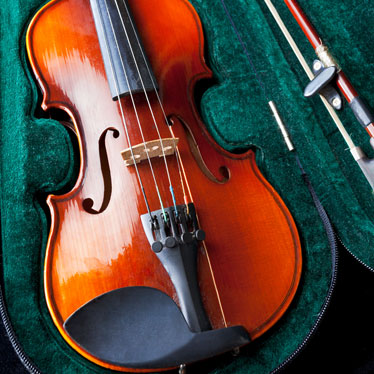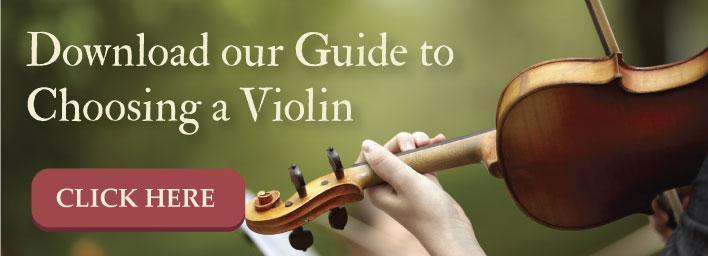6 Tips for Buying a Violin Case

As a primary means of protecting your instrument, violin cases perform an essential function. However, if you’ve purchased your instrument without a case, or the one you have has become damaged or worn out, you’ll need to purchase a suitable new case to ensure that your violin stays safe during transport or when you aren’t playing.
Yet, like the majority of violin accessories today, there are an innumerable amount of options for violin cases, and choosing the best one can become a rather involved process. Obviously, you’ll want to choose a case that will prevent any serious damage to your violin and keep it in top condition, but many players also don’t want to be burdened by a case that is excessively heavy or cumbersome.
Violin cases are available in a variety of sizes, shapes, and materials, but there are certain features that need to be placed in the “must have” category when you are planning to buy, while others can be classified as “extra upgrades.” Essentially, your violin case selection is a personal one (especially when considering the cost), but these six tips can help narrow your options and point you in the right direction.
Basic considerations that you should look for when choosing your violin case:
Tip #1. Hard Construction. Your violin case should be made of solid material. A cloth-based-type carrying bag will not protect your valuable instrument and should not be considered a “cost-effective” alternative. Most hard violin cases are constructed of wood (the heaviest to carry), compacted foam, or carbon fiber (lightest weight). A great choice for students is Revelle's CA105, which features a very light handling weight and plenty of durable protection for the price.
Tip #2. Interior Padding. The interior of the case should feature a padded “French” or “Semi-French” fit, which means that the inside contours will mold to the shape of your violin. This type of cradling is an important part of keeping your violin safe and providing as much insulation as possible. Most hard cases today feature this design because the cushioning helps prevent accidental drops, impacts, or collisions from damaging your violin.
Tip #3. Size Check. The main interior compartment should fit your violin exactly. Don’t think that even though there’s a fantastic sale on a full size case that your ¾ size violin will work with it. The additional space will allow movement, and if your instrument shifts inside the case it’s susceptible to damage.
Tip #4. Bow Placement and Extra Compartment. Most violin cases include these features, but you need to check for two things: The bow should be secured so that it does not touch the violin when the case is closed, and the small compartment should feature a way to secure the contents during travel. An extra small compartment is great for holding your rosin, a wiping cloth, and a small pencil, so it’s considered a “must have.”
In recent years, violin cases have been developed to offer superior protection and additional security.
The following tips are related to “extra upgrades” that are a great option if your budget allows.
Tip #5. Thermometers and Hygrometers. These tools make it easy to check for both temperature and humidity extremes inside your case. Since your violin is crafted from organic materials, any severe alterations in the level of moisture (very damp or very dry) or the overall temperature of your instrument can cause problems. These meters can help prevent hairline cracks, or excessive expansion and contraction by allowing you to monitor any major changes. Many high end violin cases feature them, but you can also install them separately. They should also never touch the violin or its bow in the case whether closed or open to avoid damaging them.
Tip #6. Humidifier. Like the gauges, you can purchase a violin case with a built-in humidifier or purchase one separately and include it. Be sure that the case you purchase has an additional compartment to accommodate it. A case humidifier will help prevent damages by regulating the interior moisture level in your case. For lots of luxury in a great value, Revelle's CA1500 includes all the bonus protections for advanced transportation and cradling of your instrument.
There are a number of other accessories and features that you may want to consider, including:
- Interior fabrics — silk, cotton, velvet, suede, and nylon options are available, depending on your personal preference or budget considerations.
- Violin blankets / bags — these add just a little more protection for keeping the finish of your violin looking beautiful.
- Additional compartments / bow storage — this is a convenient feature if you use more than one bow or need extra storage. One particularly excellent model is the Revelle CA305, which features many amenities in a feather light case.
Choosing a new violin case requires a little effort. By taking your time and reviewing the options at your disposal, you can make sure that the case you choose will meet your particular needs.
Check out our article on fun ways to customize your case as well!


